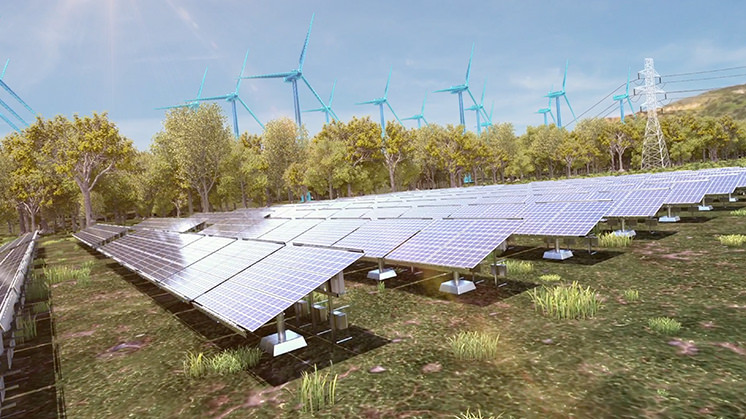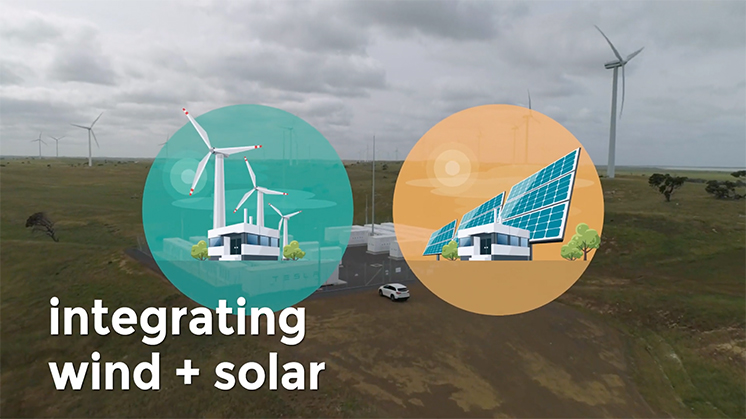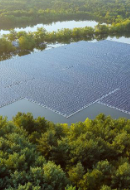Hybrid energy
Hybrid electric power: when combining renewables makes them stronger
Renewable energy Onshore wind Photovoltaic energy Energy efficiency
Reducing emissions and moving towards decarbonising energy are two fundamental objectives for safeguarding the planet. To achieve this, combining the most competitive renewable energies, as wind, photovoltaic and hydraulic energy, in hybrid installations — that can be complemented by storage systems — is proving to be an effective tool for delivering clean and efficient energy.
What is hybrid energy?
Learn how hybrid plants work.
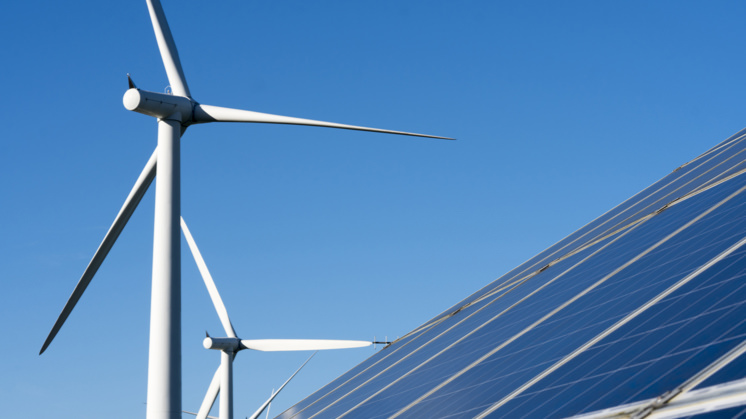
Renewable energies, environmentally friendly and inexhaustible, are the mainstay of the effort to achieve the objectives set out in the Paris Agreement and the UN Sustainable Development Goals (SDGs), in particular those relating to the fight against climate change and universal access to energy. Hybrid generation plants, which use two renewable energy sources, such as photovoltaic and wind, to ensure a more stable supply, are proving to be fundamental in achieving these aims.
What is hybrid electrical power
Hybrid power systems are those that generate electricity from two or more sources, usually renewable, sharing a single connexion point. Although the addition of powers of hybrid generation modules are higher than evacuation capacity, inverted energy never can exceed this limit. In that way, a hybrid generation plant can, therefore, use, for example, photovoltaic energy when the sun shines and another source, such as wind, in cloudy weather, thus ensuring a more stable and efficient supply. Hybrid installation may or may not always include storage systems.
Hybrid renewable plants in 3D.
Types of hybrid electrical power
Leaving aside hybrid installations with diesel generators, the most common types of hybrid electrical power combinations are:
Photovoltaic + Wind.
Photovoltaic + Hydraulic.
Hydraulic + Wind.
Solar Thermal + Biomass.
Also, a hybrid generation plant can be created from scratch or, more commonly, an existing plant can be hybridised, adding a new module from another source to the existing generation technology.
 SEE INFOGRAPHIC: The impact of hybrid electrical power (solar + wind) [PDF] External link, opens in new window.
SEE INFOGRAPHIC: The impact of hybrid electrical power (solar + wind) [PDF] External link, opens in new window.
Advantages of hybrid energy
The renewable energy sector is in a constant process of innovation to increase its efficiency, competitiveness and to protect the health of the planet. The main advantages of hybrid projects include:
 Increased capacity factor in the access point of the hybrid plant thanks to the complementarity of the load curves of both technologies.
Increased capacity factor in the access point of the hybrid plant thanks to the complementarity of the load curves of both technologies.
 Switching between sources when one is inactive reduces the unpredictability inherent in renewable energy and improves the stability of the electricity supplied. Thus, the power on the supply point is ensured.
Switching between sources when one is inactive reduces the unpredictability inherent in renewable energy and improves the stability of the electricity supplied. Thus, the power on the supply point is ensured.
 Optimization on the use of electric infrastructures, involving synergies on O&M and CAPEX.
Optimization on the use of electric infrastructures, involving synergies on O&M and CAPEX.
 Speeding up connection times and the commissioning of new renewable generation plants if there is no need to apply for a new access point.
Speeding up connection times and the commissioning of new renewable generation plants if there is no need to apply for a new access point.
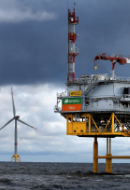
Innovation in renewables
We innovate to improve the efficiency of our renewable assets.
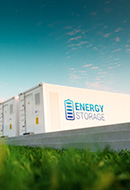
Energy storage
The key to a decarbonised future.
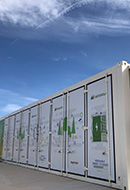
BESS
Discover battery energy storage systems.
Regulation and hybrid electrical power
As electricity generation from the hybridisation of renewables is a recent development, specific regulation on the subject is still scarce almost all over the world. India is one of the pioneering countries in this regard. Since 2017, it has had a specific policy aimed at providing a framework for the promotion of large wind-photovoltaic hybrid systems.
Hybrid generation plants are also emerging in Australia, driven by tightening grid requirements. In most European countries, in terms of legal requirements, photovoltaic-wind power plants are not usually treated differently from other technologies.
However, countries such as Spain, Portugal and Ireland have already taken steps to develop this type of plant. In the case of Spain, a decree law has been passed that allows the transformation of a normal plant into a hybrid plant with less time to receive government approval. In the case of new installations, the guarantees for lower-power energy are reduced, with the aim of facilitating their implementation.
The main development in recent years has been the decision to make this type of plant a unique resource for areas far from large cities. These places are the most affected by rising costs, and in this way they solve their problem in a self-sufficient way. In Germany, the United States and India, mixed energy auctions are also currently being held, for which hybrid plants are the main beneficiaries.
Internationally, these are developers' main requirements of regulatory bodies in order to maximise the potential for hybridisation:
- A clear regulatory framework, starting with a definition of the different hybrid generation plants.
- Standardisation of requirements relating to grid connection and measurement and traceability procedures for renewable energy in hybridisation projects.
- When an existing plant is hybridised, developers should be able to install a total renewable energy capacity greater than the agreed grid connection capacity.
Our hybrid projects
In recent years, hybrid energy has begun to play a key role in Iberdrola's green energy projects. This is the case of Port Augusta in Australia, the company's first wind-solar hybrid project, which is already an operational facility. 50 wind turbines and 250,000 solar panels will help increase the amount of renewable energy in the country.
In addition to this plant, we are also working on several projects that will bring hybrid energy to two more continents. In Brazil, there is already the Chafariz Renewable Energy complex, while in Spain we are currently working on the creation of two photovoltaic plants within the Ballestas and Casetona (BaCa) wind power complex and we have obtained environmental approval for HIDRO Cedillo, the first hybrid photovoltaic and hydroelectric plant in Spain.





